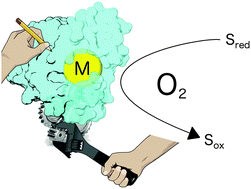Design and engineering of artificial oxygen-activating metalloenzymes
Abstract
Many efforts are being made in the design and engineering of metalloenzymes with catalytic properties fulfilling the needs of practical applications. Progress in this field has recently been accelerated by advances in computational, molecular and structural biology. This review article focuses on the recent examples of oxygen-activating metalloenzymes, developed through the strategies of de novo design, miniaturization processes and protein redesign. Considerable progress in these diverse design approaches has produced many metal-containing biocatalysts able to adopt the functions of native enzymes or even novel functions beyond those found in Nature.


 Please wait while we load your content...
Please wait while we load your content...